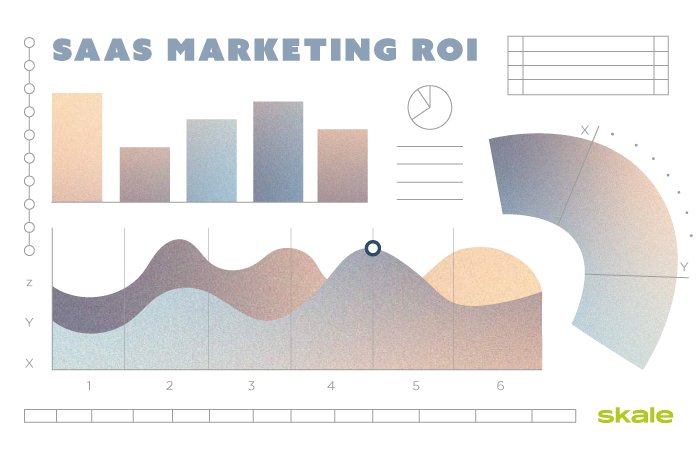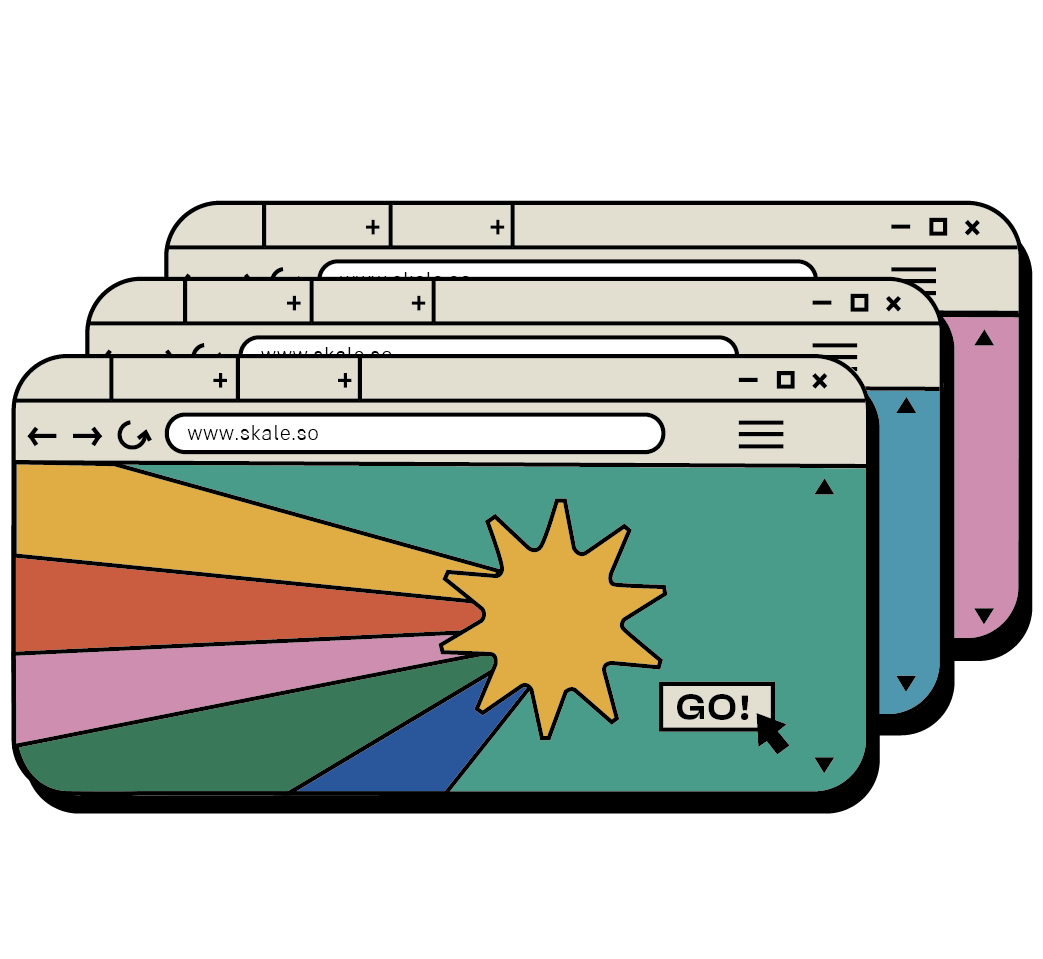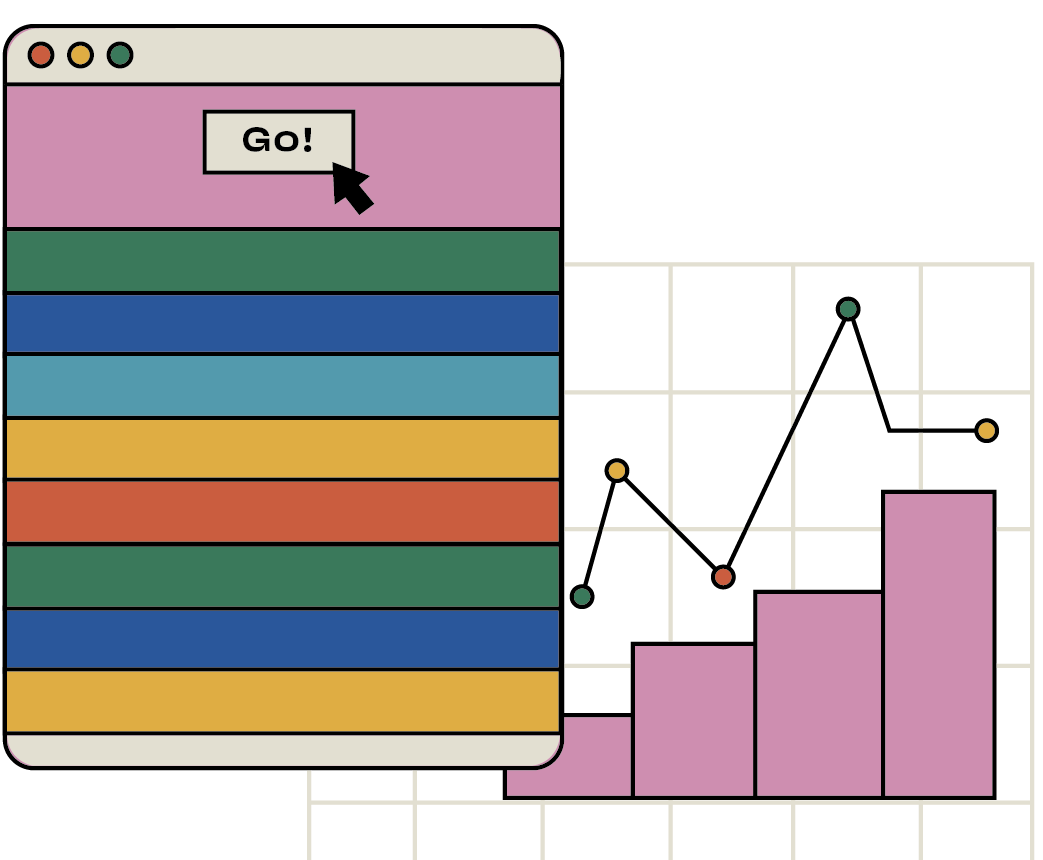
The best 8 SaaS marketing events to attend in 2024
In this comprehensive guide, we'll showcase some of the best SaaS marketing events in 2024 that you shouldn't miss.

Marketing can feel like shooting in the dark without measuring the results. As you’re investing money in marketing, it makes sense to have some expectations regarding the outcomes. Measuring ROI (Return on Investment) is critical, especially for SaaS businesses.
The good part? The data you need to measure your ROI is generated within your processes and systems. Instead of wasting time gathering and compiling your data—all you’ve got to do is analyze it.
The ROI of SaaS marketing is the ratio of the profits attributable to your marketing efforts to your marketing costs. As Jakub Rudnik, Head of Content at Scribe, explains:
‘’Marketing ROI is simply the value of your marketing efforts compared to their cost. This can be as clear as ‘X ad dollars = X sales’ or something a bit further removed: ‘X efforts = X free signups.’’
Measuring ROI gives you better insights into which of your SaaS marketing strategies are burning your cash, and which ones are producing positive, tangible results.
Your ROI turns positive when you generate more profit than what you spent on marketing your SaaS business.

The SaaS market is booming–in 2021 there were over 15,000 companies in the U.S. alone. This saturation keeps making marketing more challenging. Moreover, the most successful SaaS companies are spending about 40-50% of their annual revenue on marketing.
Getting your money’s worth is more important than ever—calculating ROI helps you ensure that you’re spending for the best results.
In the context of SaaS companies with low margins, here’s what Julia Borgini, Founder of Spacebarpress Media, explains:
‘’Marketing ROI is important for SaaS companies because they need to be able to compare their marketing spend to business results. They need to see the effects of their marketing efforts on their bottom line. Most SaaS companies are, at least at the start, operating on razor-thin margins, so every dollar counts. And since marketing results are often long-term, it’s essential to know what they’re affecting and how they align or map to overall business results.’’
Essentially, ROI provides insights into which of your marketing strategies are worth your time and investment, and which ones don’t seem to be creating successful outcomes.
The best part is that you already have the required data at your disposal. The next steps are to analyze the large volume of data and draw actionable insights from it.

Ready to start tracking your ROI?
We’ve created a free SaaS ROI tracker to get you started
Download your trackerDigital Marketing campaigns generate a sea of data. As Liz Beechinor, President and Founder of Coefficient Marketing explains, data is key to tracking your ROI:
‘’For most companies, it starts with establishing the systems and reports to track these numbers, that’s usually step one. Once you can see the numbers you are already halfway to improving them because it’s so much easier to diagnose.’’
The large volume of data can be both a pro and con for a SaaS marketing team. You won’t have to go the extra mile to extract and compile the data like with traditional marketing channels. However, you’ll still have to sift through it to pull out the information required to accurately calculate ROI.
Let’s consider the information you’ll need when calculating ROI with a SaaS marketing ROI example. Say you’re a young SaaS startup that wants to improve customer retention rates in order to increase the customer lifetime value.
Look for the information you need in the ROI formula:
ROI = [(Profit attributable to marketing – Marketing costs) ÷ Marketing costs] x 100
An increase from 50% to 55% = 5% more retained customers
5% = 500 customers
Multiplying that (500) by your gross margin ($1,000) = $50,000 profit
In this case, your ROI will be: [($500,000 – $200,000) ÷ $200,000] x 100 = 150%
Now that you know the ROI, what should you compare it with? You need to compare the ROI on all marketing channels that your SaaS business uses. Here are a few examples:
In the context of paid ads, ROI is called RoAS (Return on Ad Spend) because the investment here is the money you spend on ads. They’re essentially the same.
For instance, if you generated profit with $10,000 from a PPC campaign that cost you $5,000, your RoAS would be:
[($10,000 – $5,000) ÷ $5,000] x 100 = 100%
Calculating ROI for SEO is slightly more complex because you’ll need to take an extra step for calculating the profit attributable to SEO.
Say your SEO efforts earned you an additional 100,000 website visitors. How do you measure the payoff for these 100,000 visitors?
Well, start by looking at your Google Analytics data. Find the average conversion rates for your SaaS product and multiply that rate with the number of new visitors.
Say your SaaS company enjoys a decent conversion rate of 3% (0.03). Your SEO efforts will have generated 300 new customers (0.03 x 10,000).
Multiply 300 by your annual gross margin per customer (assuming you’re calculating ROI annually)—say $100—and you’ll have your profit attributable to marketing ($30,000).
Assuming you spent $10,000 on SEO, you ROI will be:
[($30,000 – $10,000) ÷ $10,000] x 100 = 200%

Work with an SEO agency that puts your ROI first
Skale works with 30+ B2B SaaS companies to generate SQLs with SEO- but that’s not all
How else is Skale different?If there’s one stat that every growth marketer knows, it’s that email generates $42 for every dollar you spend. But if you’re still not sure what your email marketing magic number is, you’re about to find out.
Calculating ROI for email is fairly easy. In most cases, you’ll know exactly how much you spent on SaaS email marketing efforts. You’ll also easily have access to customer data acquired through email with Google Analytics or your email marketing software.
For example, say you acquired 500 new customers who generate a $50,000 profit for your SaaS company per year, and you spent $15,000 throughout the year on email, your ROI will be:
[($50,000 – $15,000) ÷ $15,000] x 100 = 333.33%
Note: Calculating the profit attributable to a marketing campaign is sometimes much harder. For instance, if a campaign’s goal is branding or building awareness, you’ll have a tough time calculating the ROI.
A content marketing campaign can have several goals. However, educating the audience about the SaaS product is one SaaS companies need to focus on.
The content isn’t only geared at attracting new customers, but also educating existing customers about the product—for example, explaining alternate use cases.
Content-attributed ROI is tricky—it’s difficult to accurately ascertain the part your content plays in capturing leads. That being said, all hope is not lost—your efforts will eventually show up in other metrics like Customer Lifetime Value.
However, when it comes to SEO content, you can still directly measure ROI by evaluating the increase in the number of visitors and conversion rate data.
Most social media marketing strategies are aimed at building brand awareness and development, and engaging with the target audience. These are qualitative factors and hard to quantify.
The impact of social media marketing, therefore, will primarily show up in other key SaaS growth metrics. For instance, if your campaign successfully raises brand awareness, you’ll eventually observe a steady increase in your monthly recurring revenue and annual recurring revenue.
However, there’s an exception. If you run paid ads that are linked to your landing page, you’ll be able to calculate ROI on your social media marketing directly through CTR and conversion rate data—pretty much the same way as for paid ads.
Now that you know how to measure ROI, let’s talk about SaaS marketing metrics that can help drive your ROI through your marketing efforts:
Monitoring your website traffic lets you consider which channels are bringing more visitors. If you notice a significant drop in traffic from any of your channels, you’ll need to make the necessary tweaks to your SaaS marketing plan.
CAC tells you how much you’re spending on average to acquire one new customer for your business. Here’s how you’d calculate your CAC:
CAC = [Total cost of sales + Total cost of marketing] / New customers acquired
CAC is at its most useful when compared with the Customer Lifetime Value (CLV).
Customer lifetime value is the amount of money your business generates per user throughout the duration that they use your product. Here’s how you can calculate it:
CLV = [Average Revenue Per Account / Net MRR Churn Rate]
At Skale, for example, we try to maintain a 3:1 CLV:CAC ratio. In other words, the company makes 3x the money spent on acquiring a customer.
Churn rate is the rate at which your existing customers discontinue their subscription. You can calculate the churn rate as:
Churn = [Number of customers at the beginning of a period – Number of customers at the end of a period] / Number of customers at the beginning of a period
MQLs are leads that have shown interest in your product in some way—engaged with you on Instagram, signed up for your email list, and the like.
SQLs are leads that have shown interest in purchasing your product and are ready to be connected with the sales team.
Tracking both these metrics lets you monitor the effectiveness of your campaigns as to how many new leads it generates–contributing to your marketing ROI.
These are the most common SaaS marketing metrics you’ll see SaaS marketers use frequently. It’s an inclusive list, but if you’re hungry for more, here’s an elaborate guide on SaaS marketing metrics.
A well-thought marketing strategy is crucial for improving your SaaS marketing ROI. Here are a few things you should consider:
How do you plan on putting your SaaS product in front of your audience? Simply creating content doesn’t cut it, you need a robust distribution strategy as well, not to mention a SaaS product marketing strategy.
Educate your audience through different content formats like blog posts, video content, and B2B interactive content and distribute them through social media and forums. Create resources that both new and existing customers can use if they have questions about using the software.
A free trial encourages users to give your product a try. They might find value in using it and turn into a paying customer.
Plus, if a business wants to use a paid software for the next 12 months (or longer), it makes sense for them to take it for a test drive.
The best part is that free trials wouldn’t cost you any significant money.
SEO can produce results like none of the other marketing strategies.
However, it needs expertise and is a long-term game. You won’t find your ROI breaking the needle overnight.
Most SaaS companies are trying to make it to the top of the SERPs (Search Engine Result Pages). To cut through the noise, you need a strong partner with SEO expertise and experience to help you.
Partnering with an SEO agency is a good way to improve your marketing ROI. Additionally, you might also consider SaaS marketing tools to optimize your ROI.
Forecasting requires the same ROI formulas we discussed previously. There’s just one catch: you need to use estimates.
Here are a few ways to make estimates:
The SaaS space has very few companies that are identical enough to be compared. Thus, the comparison approach can be tricky.
Making an educated guess isn’t all that reliable unless you’re fairly confident—you are guessing, after all.
In most cases, it’s recommended that you use empirical probability. But what is it? Just take a look at the past numbers, observe the changes over the past couple of years (in %), and then project those numbers out into the future.
You’ll still need to use your best judgment for a few of the numbers, though.
For instance, when forecasting ROI for paid ads, the conversions should improve since you’ll continue to incrementally optimize your ad copy to make it more effective. Quantifying the benefits of your optimized ad copy requires the best judgment.
Experience and judgment play a crucial role when it comes to forecasting ROI.

Get accurate ROI forecasts from Skale
Our team works with B2B SaaS brands to generate serious ROI, every day
Book an intro callThat’s a wrap for the complete guide to calculating your SaaS marketing ROI.
If you weren’t measuring your ROI before, there are no excuses no to now. With these tips and metrics you’ll soon have greater insights into what’s worth your time and what isn’t.
We’ll leave you with one key consideration from Peter Drucker, management guru, on the importance of understanding your ROI:
Get in touch with the Skale team today to start measuring and improving your SEO-powered marketing efforts.
“If you can’t measure it, you can’t improve it.”
SaaS marketing is different because companies are promoting an intangible product in a highly competitive landscape.
Plus, a SaaS marketing manager also needs to focus more on retention compared to other types of companies that might need to emphasize on acquisition–adding to the differences.
There are over a dozen metrics you can use in the process of calculating the ROI for SaaS marketing. The most common ones are customer acquisition cost, customer lifetime value, and churn rate.
Learn more about
SaaS Marketing

The best 8 SaaS marketing events to attend in 2024
In this comprehensive guide, we'll showcase some of the best SaaS marketing events in 2024 that you shouldn't miss.

7 Best SaaS Copywriting Agencies & Services in 2024
11+ SaaS copywriting agencies that will educate your audience, boost revenue, and nurture leads.

9 SaaS Content Marketing Agencies in 2024: Reviews & Pricing
Create content that generates serious revenue when you work with a SaaS marketing agency from this list.